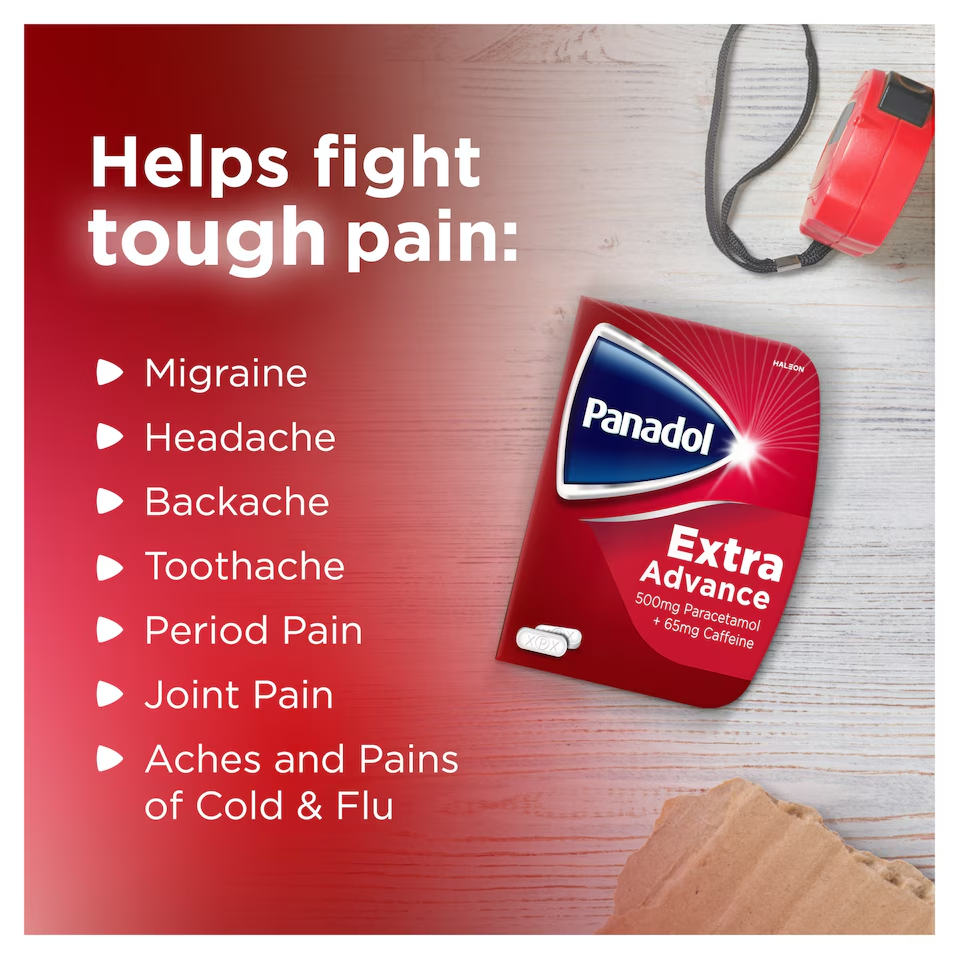Panadol is one of the most widely used over-the-counter (OTC) medications globally, known for its fast and effective relief from pain and fever. Containing paracetamol (also known as acetaminophen in the U.S. and Canada), Panadol is a trusted name in households for managing headaches, muscle pain, arthritis, backache, and common colds.
Whether you’re dealing with a migraine or post-surgical pain, Panadol is often the first line of relief due to its safety profile and minimal side effects when used correctly.
Understanding Panadol: The Science Behind It
What is the Active Ingredient in Panadol?
Pana-dol contains paracetamol, a mild analgesic (pain reliever) and antipyretic (fever reducer). It works by blocking the production of prostaglandins, chemicals in the brain that signal pain and cause fever.
Unlike NSAIDs (Non-Steroidal Anti-Inflammatory Drugs) such as ibuprofen, Pana-dol does not reduce inflammation but provides pain relief without irritating the stomach lining—making it gentler on the digestive system.
Types of Panadol Products
Pana-dol is available in several forms to suit different age groups and medical needs:
a. Panadol Tablets and Caplets
-
Standard dose: 500 mg
-
Suitable for adults and children over 12
-
Used for common pains like headaches, toothaches, andIf an overdose is suspected, seek cramps
b. Panadol Extra
-
Contains paracetamol + caffeine
-
Caffeine enhances pain relief by increasing the absorption of paracetamol
-
Ideal for tension headaches and migraines
c. Panadol Advance
-
Uses Optizorb™ technology for faster absorption
-
Recommended when quick relief is needed
d. Pana-dol for Children (Suspension or Chewable Tablets)
-
Formulated for infants and young children
-
Comes in flavored liquid form
-
Accurate dosing based on weight and age
e. Panadol Night
-
Combines paracetamol with an antihistamine (diphenhydramine)
-
Used to relieve nighttime pain and aid sleep
Common Uses and Benefits of Pana-dol
a. Headache and Migraine Relief
Pana-dol is commonly used for tension headaches and migraines due to its fast action and lower risk of side effects compared to stronger painkillers.
b. Fever Reduction
Pana-dol effectively lowers body temperature in cases of viral infections, flu, and post-vaccination fever, especially in children.
c. Arthritis and Joint Pain
For individuals with osteoarthritis or mild joint pain, Panadol provides symptom relief without affecting the stomach, unlike many anti-inflammatory drugs.
d. Menstrual Cramps
Pana-dol can reduce menstrual discomfort without causing bloating or gastric irritation—a common side effect of NSAIDs.
e. Toothache and Post-Dental Procedures
Often recommended after dental surgeries or extractions, Panadol helps manage mild to moderate pain and swelling.
Dosage and Administration Guidelines
Recommended Dosage (Adults):
-
500 mg to 1000 mg every 4 to 6 hours
-
Maximum daily dose: 4000 mg (4 grams)
Children’s Dosage:
-
Based on weight and age
-
Always follow pediatric dosing instructions or consult a healthcare provider
Important Tips:
-
Do not exceed the recommended dose
-
Always check if other medications contain paracetamol to avoid double dosing
-
Use a proper measuring device for liquid forms
Side Effects and Safety Information
Pana-dol is generally safe when taken at recommended doses. However, there are still some precautions and rare side effects to consider.
Common Side Effects (Rare):
-
Allergic reactions (rash, swelling, itching)
-
Nausea or stomach upset (less common than with NSAIDs)
Serious Risks (Overdose or Long-Term Misuse):
-
Liver damage or failure, especially when combined with alcohol
-
Kidney problems in high-risk individuals
Warning Signs of Overdose:
-
Yellowing of the skin or eyes (jaundice)
-
Unusual tiredness or nausea
-
Loss of appetite
IIf an overdose is suspected, seek emergency medical attention immediately, even if symptoms are not yet present.
When to Choose Panadol:
-
When stomach irritation is a concern
-
During pregnancy (consult your doctor)
-
If you’re on blood thinners or have ulcer Is Panadol Safe During Pregnancy and Breastfeeding?
Panadol is generally considered safe during pregnancy and breastfeeding, but it should always be taken under medical supervision.
Why it’s Preferred:
-
Minimal risk to fetus or infant
-
Does not pass significantly into breast milk
However, always avoid exceeding the dose and do not use Panadol with other medications without checking with a doctor.
Panadol Interactions with Other Medications
Always check for potential interactions with:
-
Alcohol: Increases the risk of liver damage
-
Blood thinners (e.g., Warfarin): May enhance effects, increasing bleeding risk
-
Cold and flu meds: Many contain paracetamol already
Read all labels carefully and consult your pharmacist or doctor before combining medications.
Panadol in Global Markets: Different Names and Availability
Panadol is marketed under different brand names worldwide, but the active ingredient (paracetamol) remains the same.
Popular Brand Names Globally:
-
Tylenol (USA, Canada)
-
Calpol (for children in the UK)
-
Crocin (India)
-
Dafalgan / Doliprane (Europe)
Each product may vary slightly in formulation or strength, so always follow regional guidelines.
Storage, Shelf Life, and Disposal Tips
Storage Tips:
-
Keep in a cool, dry place away from direct sunlight
-
Store out of reach of children
Shelf Life:
-
Typically 2-3 years from manufacturing date
-
Do not use expired medications
Disposal:
-
Do not flush down the toilet or throw in regular trash
-
Return unused medicine to a pharmacy take-back program
Conclusion
Absolutely. Panadol is a versatile, reliable, and generally safe option for managing everyday pain and fever. It’s essential for every home medicine cabinet—but like all medicines, it must be used responsibly.
When taken in proper doses and intervals, Panadol offers powerful relief with a low risk of side effects. However, always consult a healthcare provider for ongoing pain, chronic conditions, or when combining medications.






